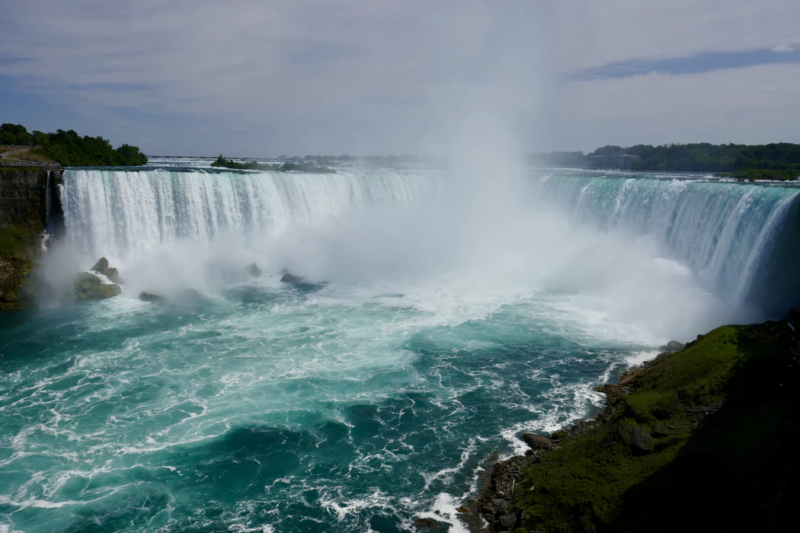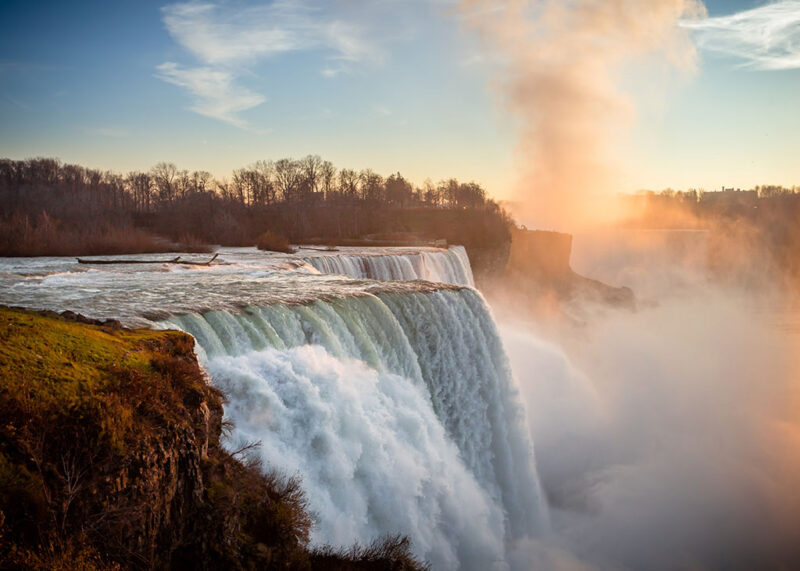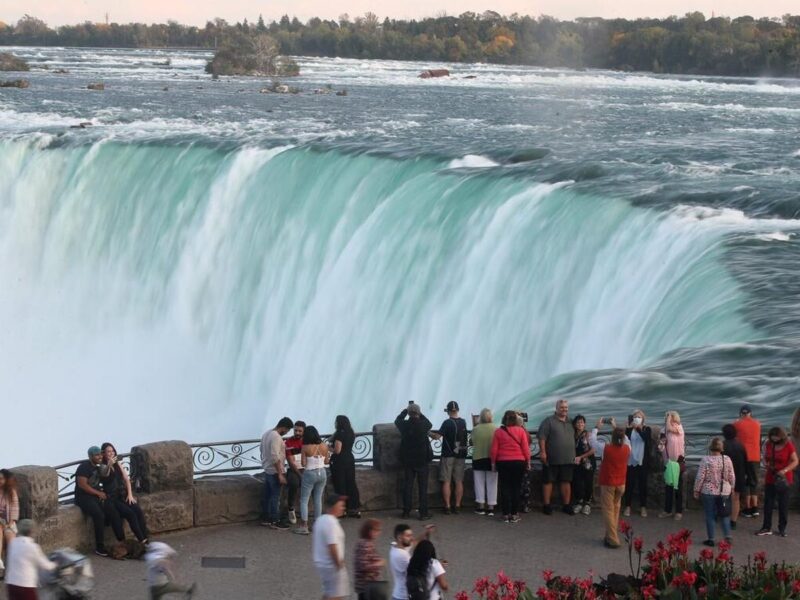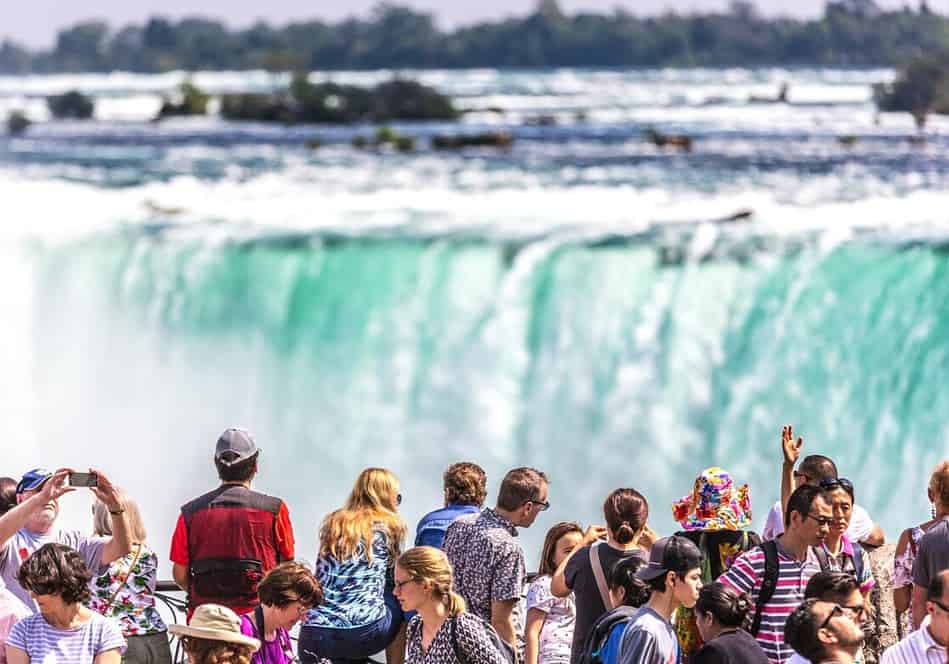Niagara Falls: a majestic force of nature that captivates millions of visitors each year. But have you ever wondered just how many people flock to witness this breathtaking spectacle annually? We will delve into the depths of visitor statistics, analyzing trends to uncover the flow of tourist footfall at one of the world’s most iconic natural wonders.
Historical Visitor Statistics
Over the years, the roaring waters of Niagara have drawn crowds like a magnet, but these numbers aren’t stagnant. They fluctuate, influenced by a myriad of factors ranging from economic shifts to global events.
In peak years, characterized by economic prosperity and favorable travel conditions, the falls transform into a bustling hub of activity, reminiscent of a thriving metropolis. Tourists swarm like bees to honey, filling the air with the buzz of excitement and anticipation.
Conversely, during periods of economic downturn or global unrest, the rush of visitors slows to a serene trickle, mirroring the natural rhythm of the falls themselves. The once bustling promenades and observation decks take on a quieter ambiance as if the falls themselves are whispering tales of times past.
These fluctuations in visitor numbers are not merely random occurrences but are often tied to larger societal and global trends. Economic recessions can dampen travel enthusiasm, while geopolitical tensions may deter international visitors. Natural disasters or pandemics can also have profound impacts, leading to temporary closures or restricted access to the falls.
Despite these challenges, Niagara Falls remains resilient, adapting to the ever-changing landscape of tourism. Historical visitor statistics serve as a roadmap, guiding policymakers, businesses, and stakeholders in their efforts to navigate the peaks and valleys of tourist activity.
Current Visitor Trends

Fast forward to the present day, and we’re met with a fascinating tapestry of statistics reflecting the pulse of tourism at Niagara Falls. Recent data unveils patterns shaped by economic conditions, travel restrictions, and the ceaseless efforts of marketing campaigns. Luckily for all of us, pandemic is over and tourism is starting to recover completely and even improve! We asked our friends behind fallstour.com to confirm that and they told us situation is incomparably better than in 2020 and 2021.
Seasonal Variations
Tourist numbers at Niagara Falls, much like the changing seasons, exhibit a distinct pattern of waxing and waning throughout the year. During the summer months, a noticeable surge in activity envelops the falls, reminiscent of the bustling energy akin to a city awakening from its slumber. The warm weather and longer days draw visitors from far and wide, eager to witness the majestic spectacle of cascading waters amidst a backdrop of lush greenery.
Conversely, as winter blankets the landscape with snow and ice, a sense of tranquility descends upon Niagara Falls. The crisp air and serene ambiance create an atmosphere conducive to contemplation and introspection. Despite the chill in the air, there’s a certain allure to witnessing the falls adorned in a glistening coat of frost, evoking a sense of wonder and reverence.
Throughout the transitional periods of spring and autumn, tourist numbers exhibit a more tempered fluctuation, reflecting the changing hues of the surrounding foliage. Spring brings with it a renewed sense of vitality as nature awakens from its winter slumber, while autumn casts a spell of enchantment with its vibrant tapestry of reds, oranges, and golds.
These seasonal variations in tourist numbers not only reflect the natural rhythms of the environment but also present opportunities for businesses and attractions to tailor their offerings accordingly. From outdoor adventures in the summer to cozy indoor experiences in the winter, each season brings its unique charm and allure to Niagara Falls, ensuring that visitors are captivated year-round.
International vs. Domestic Visitors

Niagara Falls welcomes visitors from around the globe, offering an inclusive experience that transcends borders. International travelers mingle with locals, creating a vibrant tapestry of cultures converging at this natural wonder. But beneath the surface lies a nuanced interplay of factors that shape the composition of visitors.
When examining the dichotomy between international and domestic tourists, one must consider various influences at play. Border policies, for instance, can dictate the ease of travel for international visitors, impacting the flow of tourist traffic. Exchange rates also wield significant influence, affecting the affordability of travel and spending power for visitors from abroad.
Despite these external factors, Niagara Falls remains a famous attraction for both international travelers and domestic adventurers alike. The allure of the thundering cascades transcends geographical boundaries, drawing visitors from near and far to marvel at its awe-inspiring beauty.
Socioeconomic Impact
Behind the curtain of tourism lies a realm of economic opportunity, where the influx of visitors breathes life into local businesses and fuels the engine of growth. Yet, amidst the glitz and glamour, challenges lurk, calling for a delicate balance between reaping the benefits and preserving the delicate ecosystem that sustains it all.
Future Outlook

While predicting the future may be an uncertain endeavor, there are key factors that could shape the narrative of tourism in the years to come.
One such factor is the specter of climate change, which looms large over natural wonders like Niagara Falls. Shifts in weather patterns and environmental degradation could alter the landscape and accessibility of the falls, impacting visitor experiences and tourism infrastructure.
Furthermore, evolving travel habits and preferences play a pivotal role in shaping the future of tourism at Niagara Falls. As technology advances and consumer behaviors change, the way people travel and experience destinations is likely to evolve, presenting both opportunities and challenges for stakeholders in the region.
In addition, the ever-shifting landscape of global politics casts its shadow over the future of tourism at Niagara Falls. Changes in international relations, trade agreements, and geopolitical tensions can impact travel regulations and visitor demographics, influencing the flow of tourist traffic to the falls.
Conclusion
While the future may be uncertain, one thing remains clear: Niagara Falls will continue to captivate and inspire visitors from around the world. By staying attuned to emerging trends and challenges, stakeholders can work together to ensure that Niagara Falls remains a beacon of natural wonder and a cherished destination for generations to come.
